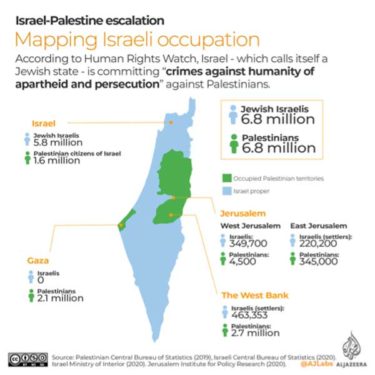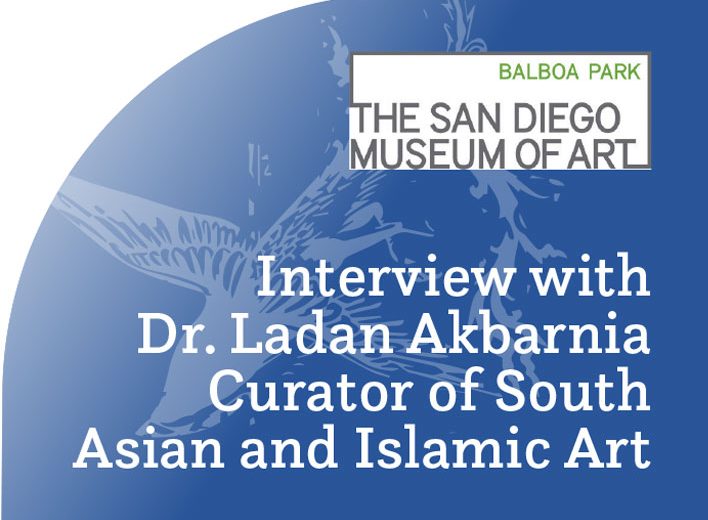Is Israel an Apartheid State? On the Ground in the West Bank
By Aria Fani
“Apartheid refers to the implementation and maintenance of a system of legalized racial segregation in which one racial group is deprived of political and civil rights.”
—Legal Information Institute, Cornell Law School
Is Israel an apartheid state? Some of you will find the question itself to be deeply offensive while many of you will find it entirely uncontroversial to call Israel an apartheid state based on current realities in the West Bank and Gaza (and even within Israel). I do not seek to debate this question. I am not versed in international law; I will leave up to legal scholars the task of debating the merits of applying apartheid as a legal and historical category to Israel.
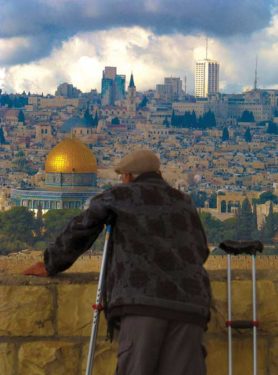
Instead, I will offer you a deeply personal account of my experiences on the ground in Israel/Palestine. I have been studying this conflict out of personal interest for ten years and have visited Israel/Palestine twice, the last time in summer 2013 when I lived in the West Bank for two months to study Arabic language and literature at Birzeit University. What compelled me to return to the diaries that I meticulously kept that summer was the fact that the ground conditions in the West Bank and Gaza are rarely—if ever—mentioned in any detail in most media coverage of Israel/Palestine in the United States. This pattern is disheartening and unacceptable.
The episodes that I will share with you here are by default anecdotal, but they point to policies and actions that have been widely documented and commented on by human rights organizations, both Israeli (e.g., B’Tselem) and international (e.g., Human Right Watch). There is also no shortage of similar personal accounts shared by international journalists and human rights activists on the ground, also widely available in print and online. Ultimately, my aim is to educate my readers. Regardless of what label you deem most appropriate for the status quo in Israel/Palestine or how you choose to justify it, it is absolutely imperative that we arrive at a shared understanding of what life looks like for Palestinians and Israelis on the ground. Without an accurate understanding of the facts of daily life, all that would be left of any debate on this contentious issue is fried air, aria fritta, as the Italian expression goes.
Arrival: Monday, June 10, 2013
After three long flights, I arrived at Ben Gurion Airport in Tel Aviv. Once an immigration official inspected my U.S. passport (and saw the word “Iran”), I was escorted to a medium-sized room where I was held for 8 hours (food and water were provided periodically). During this uncertain time, I was interviewed three times by three different officials. The questions were similar. “What do you do in the U.S.? What’s your connection to Iran? Why are you here in Israel?” After looking around the room, I realized that this section was primarily reserved for Palestinians and non-Ashkenazi Jews (though the latter would wait significantly less time). The room was mainly full of Palestinians who were returning to their homeland to see their families. Bear in mind that American Jews who have never set foot in Israel can “return” to Israel either as tourist or permanent resident at any point of their life. A similar rule does not exist for the Palestinians who were displaced in the wake of Israel’s founding in 1948. After 8 hours, an Israeli officially woke me up and gave me back my passport with a separate permit inside it. And off I went to Jerusalem to catch my orientation at Birzeit University.
Upon returning to California two months later, many friends would casually ask me, “Which airport did you fly to in Palestine?” They were surprised to learn that the West Bank and Gaza have no airports or control over their borders. The West Bank borders Jordan, but Israel has total control over who gets in and who gets out. Gaza’s borders are controlled by Israel and Egypt. Palestinians who need to travel abroad for personal, medical, or academic reasons need to acquire a permit from Israel. I saw this first hand when my Palestinian roommate, Mohammad, had to travel to Jerusalem in order to get a permit to travel to Europe to see his fiancée. Obtaining a permit is particularly difficult for Gazans.
No water, no shower
In our apartment, we often had no water to take a shower. We would fill a bucket during times when there was water and wash our bodies using water as conservatively as possible. Even my hippie lifestyle in Berkeley could not have prepared me for the lack of showers in Birzeit! Locals told me that the water shortage was due to the fact that Israel controlled the West Bank’s water resources. Beit El, a Jewish-only settlement near Birzeit, where I resided, controlled our water. International organizations have reported on Israel’s role in creating water insecurity in the West Bank and Gaza. Amnesty International has an article on this issue under the title “The Occupation of Water.” Effectively, Palestinians have an unelected entity that controls crucial aspects of their life, from access to drinking water to daily movement.
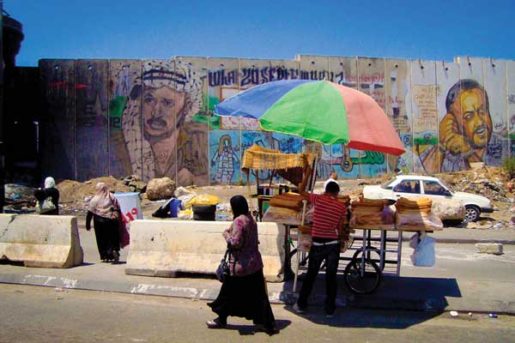 Refugee Camps: Wednesday, June 19
Refugee Camps: Wednesday, June 19
Students of Arabic at Birzeit had the option to volunteer at a refugee camp nearby called Jalazone. I will never forget the first time I saw Jalazone: built in 1949 as a temporary camp for displaced Palestinians, more than seventy decades later, it had now become a site of permanent exile. And you can sense this everywhere: from the tense atmosphere in the camp to its congested streets (more than 14,000 residents living in 0.10 square miles) and haphazardly-built homes. I began to volunteer at the children’s center in Jalazone and got to know some of the residents. I learned that Jewish settlers at the nearby Beit El settlement at times attack the residents in Jalazone and that some kids have been maimed or killed only by accidentally getting close to the settlement. Jewish-only settlements in the West Bank are considered illegal by the international community.
Curtailing everyday movement
Living in the West Bank, it was impossible not to notice two clearly-segregated paths of movement everywhere. Jewish settlers living anywhere in the West Bank have freeways that connect settlements directly to Jerusalem and Tel Aviv. Palestinians have to take dirt roads and side roads with tons of potholes in order to arrive at military checkpoints where they have to present permits to get to Jerusalem. The trip from Birzeit to Jerusalem would normally take under an hour, but living under military occupation meant fear and uncertainty. The construction of the wall has effectively sealed off many Palestinian communities like Abu Dis from Jerusalem, a city of huge economic, cultural, and religious importance to all Palestinians, Muslims, and Christians alike.
Under military occupation, there is no such thing as an ordinary activity. One must always be ready for violence, in all its forms: verbal, physical, and collective. On July 5, I was on my way to Jerusalem via Ramallah with my roommate. At the Qalandia crossing, our taxi van was stopped so that the Israel Defense Forces (IDF) soldier could check all permits. My passport didn’t have a stamp in it because my visa was given to me on a separate card. The soldier saw my passport and began to ask me questions in Hebrew, which sadly I don’t speak. So the driver stepped in and asked me the soldier’s question in Arabic, which I partially understood but could not answer (I tend to do better when a gun is not pointed at me).
In the middle of the hubbub, one of the passengers, an older lady, asked me, “¿Hablas español?” Her question was music to my ears since she was not yelling or pointing a gun at me. I explained my situation to her in Spanish, she translated it into Arabic, and then the driver translated it into Hebrew, and back again. This method seemed to be working until the soldier grew impatient and instructed me with his gun to get out of the van. My roommate, who also got off the bus, and I did not know how long we were going to be held. Luckily, the encounter was very brief. I explained that I was a student from California studying in the West Bank, and they let us go. It was a deeply terrifying experience—or, as Palestinians call it, Friday morning. My Arabic-language partner at Birzeit University told me how many times he had been physically and verbally humiliated by IDF soldiers at crossings.
Oh, why did the old lady assume I knew Spanish? This occurred to me when my heartbeat had slowed down: I was wearing a shirt with Peruvian embroidery. And the Palestinian lady recognized it because her son lived in the Dominican Republic, like thousands of Palestinians who at some point find their living conditions insufferable (as designed) and are forced to seek a better life elsewhere. Today, the header in all my syllabi at the University of Washington reads: “language learning saves lives.”
Protest at Nabi Salih: Friday, June 28
My roommate told me he was going to a local protest at Nabi Salih, a small village northwest of Ramallah. Since 2010, the village has become a site of weekly protests led by locals and joined by Israeli conscientious objectors (who come from Tel Aviv), international activists, and journalists. The protest was about increasing dispossession of land and restricted access to water, particularly at the hands of Halamish, the neighboring Jewish settlement. Every Friday, after prayer, locals gather under an oak tree; after a speech, they peacefully walk down where they are confronted by the IDF.
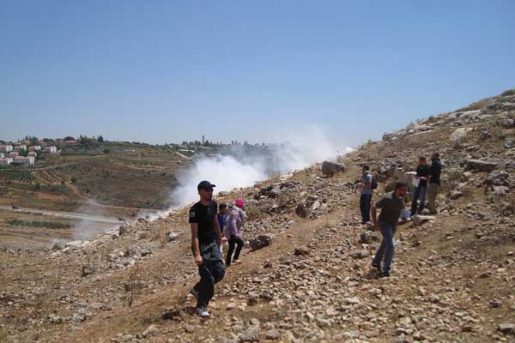
Almost immediately after we peacefully marched down the hill, the IDF began to launch teargas canisters at us, putting U.S. taxpayers’ money to good use. Once the IDF trucks came toward us, many of us began to disperse. My roommate and a few others ran up the hill where we suddenly saw a Palestinian woman who rushed us inside her house. She then closed all her doors and windows. After ten minutes, we saw a separate Israeli truck coming through the street. Even though by then there were no protestors, the truck began to spray “skunk” water from its cannon at houses and cars parked outside. Skunk water is a liquid invented by an Israeli firm called Odortec. It is more pungent than raw sewage and any amount of it would ruin your clothes (why shoot water at peaceful protesters when you can spray them with an experimental chemical?). Locals told me that it has burnt their skin. Locals thought the IDF’s response that day was relatively restrained! An American woman had been blinded by a rubber bullet a month earlier and on other occasions tens of protesters had been shot and injured.
When leaving the woman’s house, we saw an older Palestinian man who was helplessly trying to get the stench off his front yard and car. When he saw us, he began to shout at us in Arabic. I did not need an interpreter or dictionary to understand his anger. I felt absolutely gutted. Here I was, a naive foreigner, whose presence had helped draw out the IDF to spray skunk water at this poor man’s house. What did our protest achieve? We were headed back to Birzeit and he was left on his own to cleanse his house of lingering stench. If you are interested to learn more about Nabi Salih’s struggles, the Oakland Institute has a great article on the Nabi Salih protests, titled “You Cannot be Free Without My Freedom.”
Touring the West Bank: Sunday, June 30
On a tour organized by Birzeit University, we visited the home of Hani Amer whose residence in Salfit has been completely sealed off from the rest of his community by the Israeli wall. He is essentially a prisoner in his own house. Drawing on humor to deal with his living situation, he has declared an autonomous state!
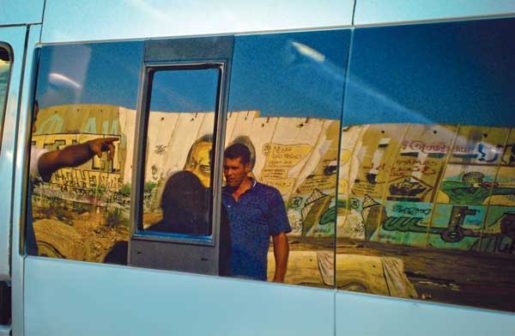
The road from Birzeit to Mr. Amer’s house was filled with road blocks, standalone watch towers, military posts, and electric barbed wire. At one point, our tour guide asked the driver to stop so he could tell us about the international companies that sell Israel the building block that makes its military apparatus.
On the way to Birzeit, we made another stop to see how Ariel, Israel’s biggest settlement in the West Bank, pours its waste water into parts of Salfit, ruining the ecology of Wadi al-Matawi, an area between Salfit and Ariel. According to B’Tselem, Israel has prevented Palestinians from opening a wastewater-treatment facility in Salfit. You can see this report by searching for “Ariel settlement fact sheet” on B’Tselem.
Hebron (Al-Khalil): Sunday, July 14
Visiting Hebron was very intense. It is the only Palestinian city, to the best of my knowledge, where Jewish settlers live inside the city. The city is sliced into different zones with a heavy military presence guarding each. Most of its shops were closed and those that were open looked impoverished. Hebron’s scars of history have not been allowed to heal—in 1994, an Israeli far-right terrorist entered the Ibrahimi mosque, killing 29 and injuring 125 Palestinians. One moment that really stood out to me was when our Palestinian guide was giving us a tour of one neighborhood: a Jewish settler passing by shouted in perfect American English, “Don’t believe a word of what he says!”
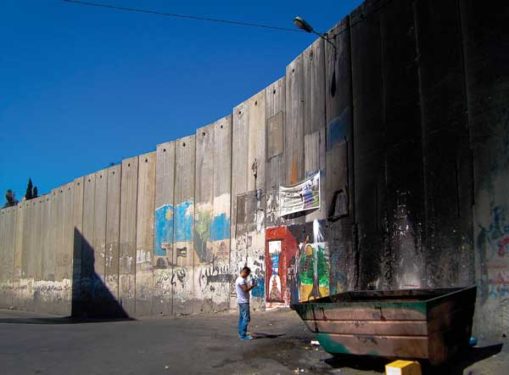
Visiting Hebron made me realize that there is no unified reality in the West Bank. Each city lived its unique version of the occupation. This disparity was grotesquely visible. For instance, Ramallah and Qalqilya are only an hour or so apart, but the former feels like a vibrant city and the latter is one of the most depressing towns I have ever visited in my life. Qalqilya is completely surrounded by the Israeli wall—it’s an open-air prison. It stands only half an hour away from the Mediterranean sea, yet we met kids who had never seen the sea in their life. Conditions within the same city can be radically different as well. The Church of Nativity in Bethlehem attracts a lot of tourists and in its surroundings there are some cute shops, but if you walk 10 minutes away in a different direction, you come across businesses that have been utterly ruined by the construction of the wall (with anti-Palestinian graffiti written on the doors). Refugee camps have a reality of their own; they depend on international organizations for basic aid and are in poor shape. And Gaza is a world of its own which I did not visit: it is under Israeli military blockade by land, air, and sea. It has an obscenely high unemployment rate.
The J Street Tour: Friday, July 19
J Street is an American non-profit organization that advocates for a peaceful end to the Israeli-Palestinian conflict. They organized a tour in Israel that shows how people suffer from the conflict. They took us to Sderot, a city less than a mile from Gaza in Israel. We heard of Israelis who had lost loved ones to Hamas rocket attacks. We also met a member of Gisha, a legal center that advocates for more freedom of movement for Gazans. The tour ended on the bus with a lively discussion of what we had learned and the types of solutions that J Street supported. The moment that I most vividly remember from that day is looking at Gaza City from what must have been a 1,000 yards away: it looked densely populated, most of it hidden behind a terrifying wall.
Protest at the Negev: Thursday, August 1
After taking my Arabic final exam, my roommate and I ran to catch a bus to Jerusalem to attend a protest in the Negev, close to the city of Be’er Sheva, a desert region in southern Israel. The gathering protested Israel’s plan to destroy a Palestinian village and displace its inhabitants. Israel has destroyed tens of Palestinian villages in the Negev. Like the protest in Nabi Salih, there was a mix of Palestinian, Israeli, and international protestors. Unlike Nabi Salih, instead of the IDF, the police who showed up were not violent, probably due to the fact that the protest took place inside Israel.
Final words
I did not return to the United States with a settled understanding of this conflict. In fact, I only discovered the depth of my historical ignorance and the importance of having difficult conversations. During my time in Israel/Palestine, I had conversations with right-wing Christian Zionists, Israeli leftists deeply critical of Israel, Palestinian refugees, Israeli victims of Hamas’ terrorist attacks, international activists and aid workers, children of Holocaust survivors who objected to the occupation, and Palestinian academics. It was truly a privilege to be able to listen to so many different perspectives and engage them in conversation. While there was no consensus over the history of the conflict or viable solutions to end it, there was at least a shared understanding of objective reality, a factor often sorely missing from media coverage of Palestine/Israel in the U.S. It is harder to negate the realities of military occupation when they are unfolding before your eyes (yet some still did!). So, is Israel after all an aparthied state? I won’t answer that question. I only insist that when discussing this conflict, we recognize and foreground the facts on the ground and the disparate realities of people who live in Palestine/Israel.


